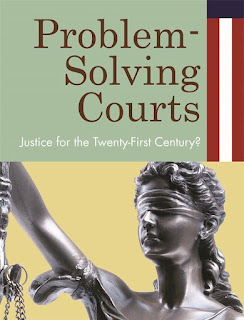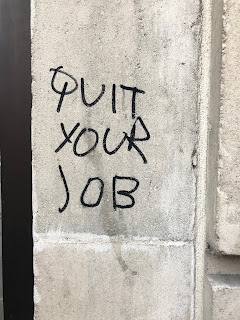Shaw Brothers
One of the ways I have been keeping busy and maintaining my sanity during the current pandemic has been watching kung-fu films, with a special focus on the movies produced by the Shaw Brothers Studio in Hong Kong during the 1970s and early 1980s.
What is compelling about these films?
The first thing that must be acknowledged upfront is that these are not great films in the conventional sense. They were made quickly and relatively cheaply – at their height, Shaw Brothers cranked out more than 20 films per year. The acting isn’t exactly subtle. The comedy tends toward the broad (and occasionally the offensive). Perhaps because of the language barrier, the scripts somehow manage to be both simple and difficult to follow at the same time. I watch most of the films with the sound off in order to eliminate the bad dubbing into English and the often-oppressive sound effects.
Despite all of these negatives, the Shaw Brothers kung-fu films make for incredibly enjoyable viewing. For me, their greatness resides in the following:
The Ensemble – Like the classic Hollywood studios, Shaw Brothers kept a cohort of actors under contract and used them frequently to get their money’s worth. The Shaw Brothers kung-fu films feature what amounts to an ensemble cast, with the same dozen or so supporting actors rotating through playing different roles in each film. Every time Kara Wai pops up in a film, for example, she brings a little bit of joy with her, kind of like seeing an old friend at a reunion. Other actors that always bring a smile to my face when they appear include Lo Lieh and Wang Lung Wei, who often play baddies; it is a particular pleasure on those few occasions when they are drafted to play good guys.
The Sets -- Perhaps driven by cost concerns, the majority of the Shaw Brothers films seem to have been shot on sets rather than on location. Somehow, this works to the benefit of the films, giving them a certain surreal, timeless quality that suits the stories they tell, which tend toward the mythic and the historical. (The Shaw Brothers films are a bit like the original Star Trek series in this way.) The films may not be expensive, but they are consistently interesting to look at, full of bright colors, elaborate architecture, and funky costumes.
The Cultural Similarities and Differences – Critics of toxic masculinity be forewarned: kung-fu films have a lot in common with American Westerns. Almost every movie revolves around themes of honor and revenge. Conflicts are almost exclusively resolved through violence. The old line often (mis) attributed to John Wayne would apply to most of the kung-fu heroes: “A man’s got to do what he’s got to do.” Typically this means paying back dozens of adversaries in the third act for crimes committed against the hero’s family or village or martial arts club in the first act.
While they echo Hollywood movie conventions, the Shaw Brothers movies are different in many ways. Here the history that matters is Chinese history. Shaolin monks feature prominently, so many of the films contain a light dusting of Buddhist philosophy. The heroes often extol an ethic of modesty and a belief in the virtues of discipline and difficult practice. The films are exceedingly chaste – I can’t remember a single public display of affection off the top of my head. And they are almost always efficient: after 90 minutes, the films typically end immediately after the climactic battle with a freeze-frame shot – no valedictory speech, no epilogue, no nothing.
The Choreography – Kung-fu films are action films and this is where the Shaw Brothers movies really shine. In an era before computer effects, fight scenes had to be carefully scripted and rehearsed in advance. The Shaw Brothers’ films were nothing if not exceptionally well-choreographed. It is a cliché to say that martial arts action is basically a form of dance, but I can’t think of a better way to describe what happens in these films.
No action hero from the Shaw Brothers canon is more graceful, more charming, or more athletic than Gordon Liu, who is a beloved figure among kung-fu fans but never crossed over into the Bruce Lee-Jet Li-Jackie Chan pantheon in terms of mainstream name recognition. All of his films are worth checking out, but these are my favorites:
Dirty Ho – Liu plays a prince who, for reasons that are still obscure to me after having seen the film twice, decides to pretend that he has no martial arts skills. This leads to a number of remarkable set pieces where Liu must evade attackers without revealing his prowess.
Return to the 36th Chamber – The 36th Chamber of Shaolin is probably Liu’s most famous film, but I actually prefer the sequel, which allows Liu to show some of his comedic skills.
Martial Club – The story of two rival martial arts clubs ends with a claustrophobic battle in an increasingly narrow alleyway between Liu and Wang Lung Wei. A rare film that doesn’t culminate in massive bloodshed.
Challenge of the Masters – Another film that focuses on a rivalry among martial arts clubs. It ends on a lovely grace note with Liu showing compassion and forgiveness to his main rival.
Clan of the White Lotus – This is almost a feminist film. Liu faces perhaps his most formidable rival – Lo Lieh’s Pai Mei – who defeats Liu on three separate occasions. Liu only succeeds in the end when he is taught a novel brand of kung-fu – the embroidery technique -- by Kara Wei.


